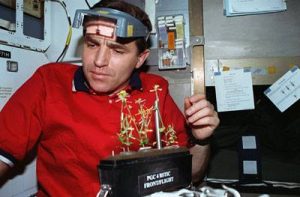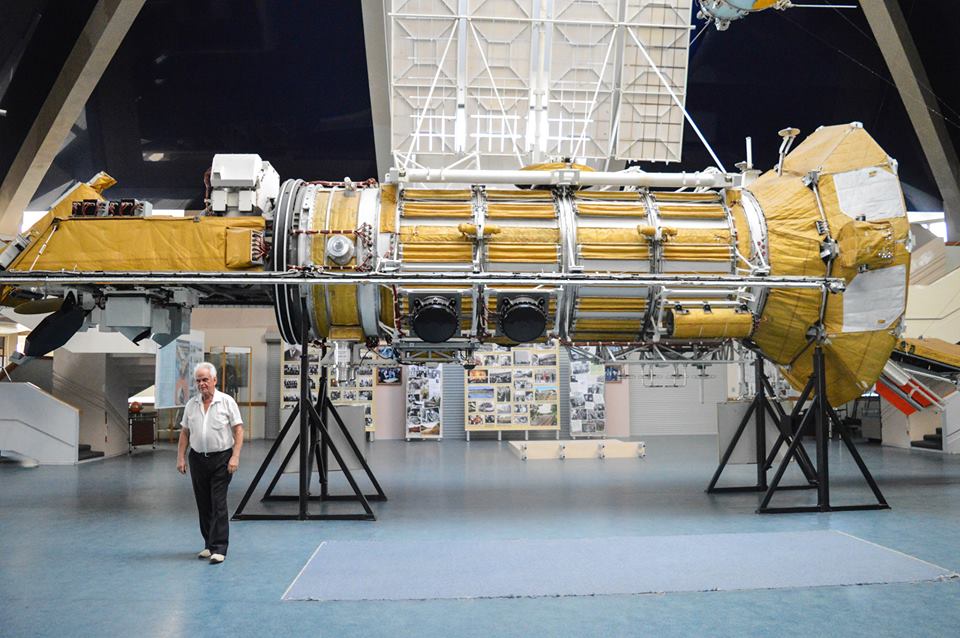Four Ukrainian rocket scientists (three of whom survived Soviet repressions)
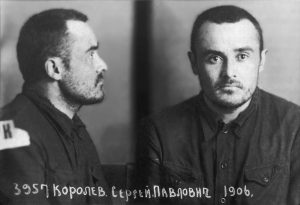
It is telling that all of the top-four Ukrainian rocket scientists of the Soviet era were impacted by Soviet repressions. One paid with his life.
Two central figures in the Soviet space program - rocket engineer Serhiy Koroliov and designer of rocket engines Valentyn Hlushko - were both Ukrainian-born rocket scientists; the first was from the city of Zhytomyr, the second from Odesa. In the 1930s, both worked in the Jet Propulsion Research Institute (RNII) in Leningrad (now Saint-Petersburg, Russia), were falsely accused of being co-conspirators in an anti-Soviet plot amid Stalin's Great Terror, spent years as prisoners, yet survived, unlike their other colleague from Ukraine, Heorhiy Langemak.
He was initially sentenced to 10 years in correctional labor camps and spent several months in a gold mine in the Kolyma with an extremely high death rate due to poor conditions. In the camp, Koroliov sustained various injuries due to regular beatings and lost most of his teeth from scurvy. Later he was retried and Koroliov's sentence was commuted to 8 years in an aircraft research and design center. In fact, his jaws that were broken in GULAG and healed improperly caused his death in the 1960s, as doctors failed to intubate Koroliov during routine surgery.
Both Hlushko and Koroliov were released only in 1944, although charges against them weren't dropped until several years later.
Another Ukraine-born rocket engineer -- Heorhiy Langemak, an ethnic German from Starobilsk -- didn't survive the communist spy mania of the Great Terror in the 1930s. Hlushko and Koroliov's colleague Langemak, who had successfully designed and developed the solid fuel rockets that were later widely used by ground attack planes and the famous "Stalin Organ" -- multiple rocket launchers BM-13 "Katyusha," was executed in 1938 charged with "sabotage" and participation in an "anti-Soviet terrorist organization."
The development of the first functional ballistic missile V-2 by Nazi Germany in WWII gave a push to the American space program following Operation Paperclip, in which leading German rocket scientists, including V-2's chief designer Werner von Braun, surrendered to the US, where they continued working on rocket-related projects.
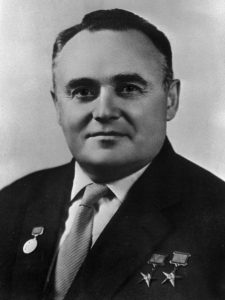
The USSR wasn't so lucky: they only recovered several rockets and parts and recruited mostly technical German personnel linked to the production of V-2's with only a couple of German rocket scientists.
Koroliov became the chief designer for the Soviet ballistic missile based on V-2. First, the Soviets and Soviet-held Germans had to reverse engineer, recreate blueprints of V-2, and produce several copies of the German missile, then the Koroliov-led team would improve on the rocket that was quite unreliable as a weapon in terms of its range and the hit-to-miss ratio.
The flawed design saw consistent improvement and at its seventh iteration, the vehicle became the intercontinental ballistic missile R-7 which was used to launch the first artificial satellite Sputnik-1 into the low Earth orbit. This is how Koroliov became a mastermind behind the Soviet space program. The R-7 design has, in fact, been in use even today as the main stage core of the Russian Soyuz spacecraft.

After the success of Sputnik-1, the R-7 based rockets were used to send stray dogs into space on several occasions with varying degrees of success, and in 1961, Koroliov's team sent the first man -- Yuri Gagarin -- to orbit in the first-ever human spacecraft Vostok.
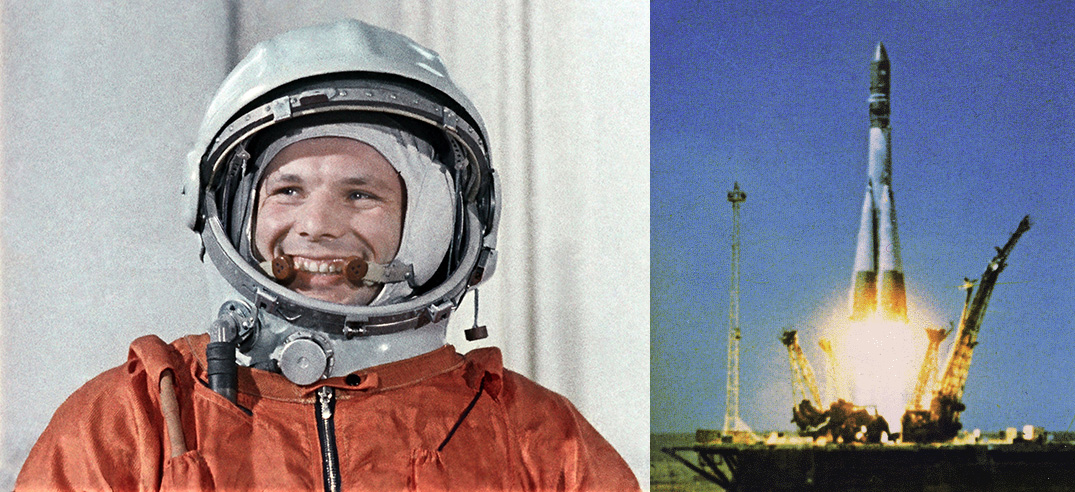
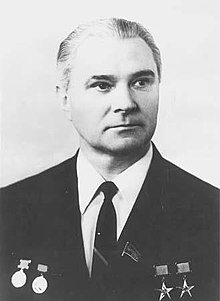
Further flights of the spacecraft and its successor Voskhod brought several more humans into space and back, including the first woman -- Valentina Tereshkova, the first multiman space flight, and a mission that included the first spacewalk.
Less than a month after Koroliov's death, on 3 February 1966, the Moon space probe Luna 9 became the first man-made spacecraft to survive landing on a celestial body.
Later Hlushko was behind the Buran/Energia project that resulted in one successful uncrewed flight of the Soviet space shuttle Buran and two flights of the heavy-lift vehicle Energia in 1988. For lifting Buran up to orbit, Energia used four strap-on boosters -- they were Zenit liquid-propellant rockets, designed in Ukraine by the Yuzhnoye bureau.

In 1954, Mykhaylo Yanhel founded a ballistic missile design bureau in the Ukrainian city of Dnipro that later became Yuzhnoye Design Office and exists to this day, closely cooperating with Dnipro-based Yuzhmash rocket factory. The facilities are also less known under their Ukrainian names - Pivdenne and Pivdenmash.
Yanhel was born in Siberia, where his grandfather was deported from Ukraine's Chernihiv province for rebellion. Yanhel's facility designed and mass-produced intercontinental ballistic missiles (ICBMs) for the Soviet military and rocket engines. Some of the designs of Dnipro-developed ICBM vehicles were adapted to launch spacecraft and became the foundation for later space rockets.
In Soviet times, Yanhel's bureau designed a number of various ICBMs, including the ones with orbital capabilities. The non-military launch vehicle adaptations of his rockets became the launch systems Kosmos, Tsyklon, and Dnepr.
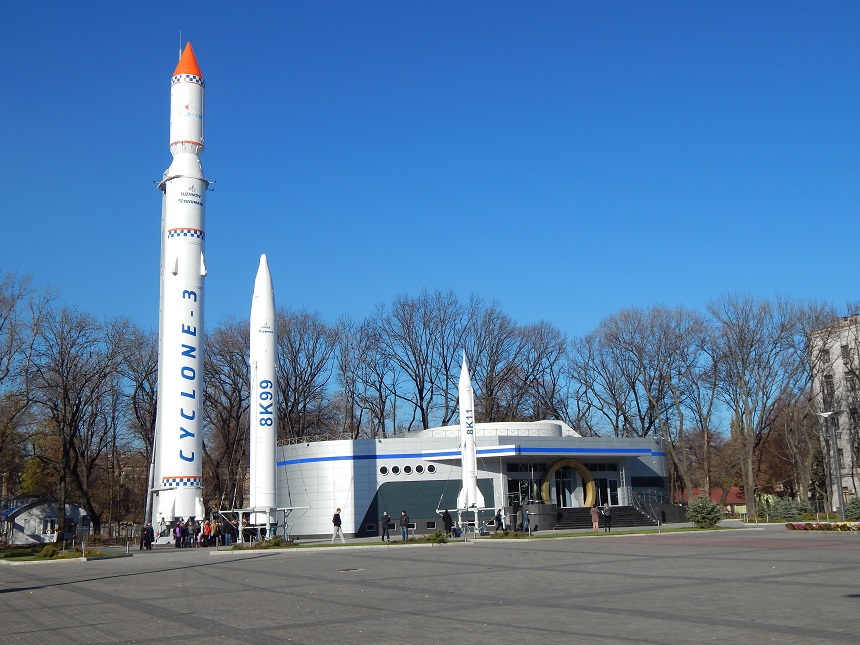
Under the Soviet flag, 16 cosmonauts from Ukraine traveled into space. Meanwhile, Heidemarie Stefanyshyn-Piper was an American astronaut of Ukrainian descent who had flown on two Space Shuttle missions in the early 2000s. The first astronaut of independent Ukraine was Leonid Kadeniuk, who was a member of the US space shuttle mission STS-87 in 1997.
Post-Soviet rocketry in Ukraine: surviving against all odds
As the Soviet Union eventually collapsed in 1991, most large enterprises in all former Soviet republics found themselves on the brink of bankruptcy being fully dependent on centralized state orders under the socialist state-planned economy. Not only did orders from Moscow, mostly for defense-related products, vanish; entire supply chains were disrupted, often comprising multiple factories and research facilities across the entire USSR.
Against all odds, state-owned Yuzhnoye and Yuzhmash survived due to retaining and re-establishing links to Russian companies and participating in new international projects.
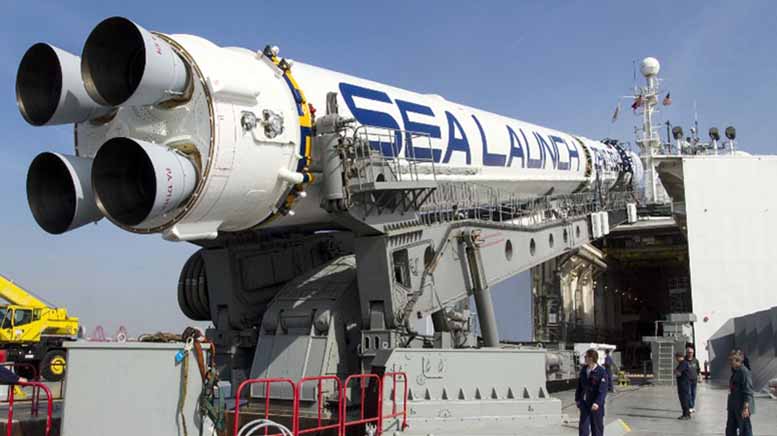
In 1985-2019, 84 launches of various rockets from Yuzhnoye's Zenit family took place, including 36 launches of Zenit 3SL by the multinational company Sea Launch.
In 1995, Ukraine launched Sich-1, the country's first Earth observation satellite, atop Tsyklon-3 rocket from Plesetsk Cosmodrome in Russia. Both the satellite and the rocket were designed and produced in Dnipro, with the rocket being a derivative of the Soviet-time intercontinental ballistic missile R-36 developed by Yanhel's bureau in the 1960s and dubbed SS-18 Satan by NATO. Sich-1 operated until 2001.
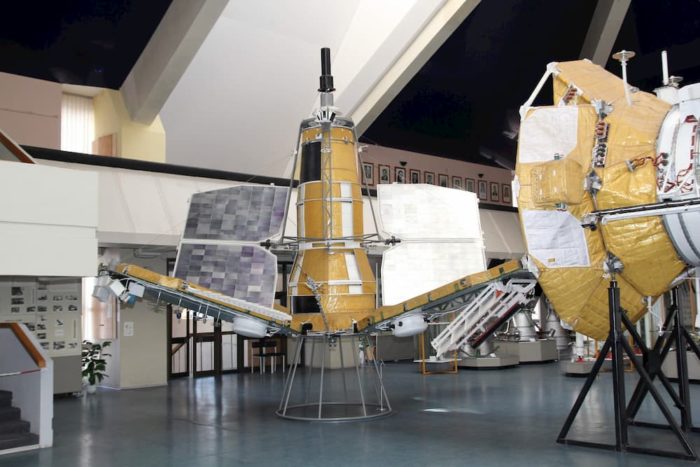
In 2011, Ukraine launched another similar satellite, Sich-2, this time on the Dnepr carrier from the Russian territory. This one was lost a year later.

A number of Tsyklon family rocket launches continued since the 1970s until the vehicle was retired in 2009. In 1999-2015, a Russian-Ukrainian-Kazakh company launched multiple satellites on Yuzhnoye's 22 Dnepr carrier rockets from Kazakhstan and Russia.

Yuzhnoye has also developed and Yuzhmash produces the first stage of Northrop Grumman's Antares rocket used to launch the Cygnus cargo spacecraft to the International Space Station. Since 2013, Antares was launched 14 times with only one failure and the project remains active with the next launch scheduled for August 2021.
In 2016, Pivdenmash had to overcome the peak of the crisis of production that was caused by the break of its supply chain with Russia.
The future

Despite all the challenges faced by the Ukrainian space program, Volodymyr Taftay
, head of the State Space Agency of Ukraine, remains optimistic:
"Ukraine's space activities are now in a difficult situation, because over the past 5-7 years (following the Russian occupation of Ukraine's Crimea and the Donbas, - editor), domestic space companies lost multiple customers. Among the large customers was the Russian Federation. Ukraine has lost a lot from the termination of contracts with it, but at the same time, it gives an opportunity to establish cooperation with other foreign partners," he said in his interview with Ukrinform.
At the end of 2021, SpaceX is going to launch the Ukrainian satellite Sich-2-30 previously known as Sich-2-1 on the Falcon 9 rocket. In total, Ukraine is going to create a constellation of seven Ukrainian satellites in the upcoming years. Sich-2-30 is the first Ukraine satellite of this kind to be launched in 10 years.
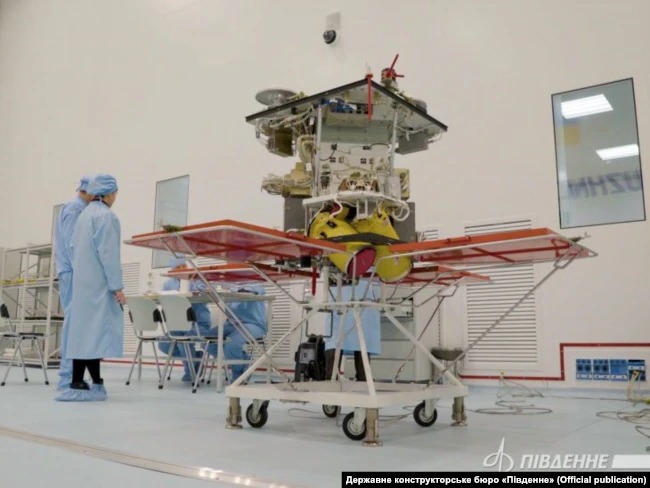
Currently, Yuzhnoye has been developing the rocket Cyclone-4M, which is going to be launched from Nova Scotia by Canadian company Maritime Launch Services. The rocket's maiden flight is set for 2022.
Another rocket-launcher project of Yuzhnoye, which however hasn't left the drawing boards yet, is the new rocket family Mayak. The family is going to include a number of rockets, including light, medium, and heavy-lift vehicles.
In 2019, the Ukrainian parliament amended the law "On space activities" to allow private space companies space activities which potentially may boost Ukraine space capabilities, though the new legislation didn't yield any results so far. The Ukrainian space startups are at their very early stages now and it is too early to make any predictions about them.
For example, Promin Aerospace
that raised $500,000 of investment in a pre-seed round for developing the smallest orbital rocket in history was founded only in January 2021. Nevertheless, the Ukrainian Government's space program for 2021-2025 envisages full-scale cooperation of the state with the private sector and expanding international space cooperation.
Also, Ukraine has plans on creating a domestic cosmodrome, according to Taftay, however, it remains unclear whether it would be a land-based launch site or a mobile sea platform similar to Sea Launch.
Volodymyr Taftay hopes that the national space agency would join the European Space Agency (ESA) in 2-3 years from now.
"In the near future, Ukraine will take part in NASA's Moon exploration program Artemis. We have recently signed a memorandum of cooperation. In addition, we plan to participate in programs that involve the study of Mars," says Taftay
It is also noteworthy that two private UK and US-based space companies have Ukrainian connections: UK-based Skyrora has an R&D facility in Dnipro, Ukraine, while the American Firefly Airspace company founder Max Polyakov is originally from the Ukrainian city of Zaporizhzhia. Both companies are still preparing their first launches: Skyrora is going to finish the development of its three-stage orbital launch vehicle Skyrora XL by late 2022, while Firefly Airspace prepares its Alpha rocket for its debut launch later this year.
Further reading:
- Revival of Ukrainian space sector: A viable new prospect? (2020)
- Russian cosmonaut claims she spotted Ukrainian bombs in the Donbas from space (2019)
- Kyiv Polytechnic Institute to design and market satellites with energy NGO (2018)
- Top-10 space achievements of independent Ukraine
- UK-Ukrainian satellite launch vehicle developer Skyrora to test its first rocket in 2018
- Canada’s first spaceport will launch Ukrainian rockets
- Dnipro will not let Ukraine’s space glory be forgotten
- Ukrainian MarsHopper won NASA Space Apps Challenge
- Ukraine to regain position in world space and missile industry
- Ukrainian MarsHopper won NASA Space Apps Challenge
- The first and only astronaut of independent Ukraine passes away at 67: a reflection on the career of Leonid Kadeniuk
- Ukrainian Zenit-3SL Rocket Successfully Launches the EUTELSAT 3B Spacecraft (2014)



